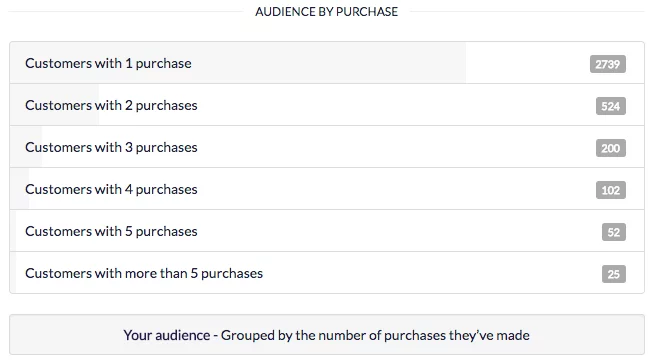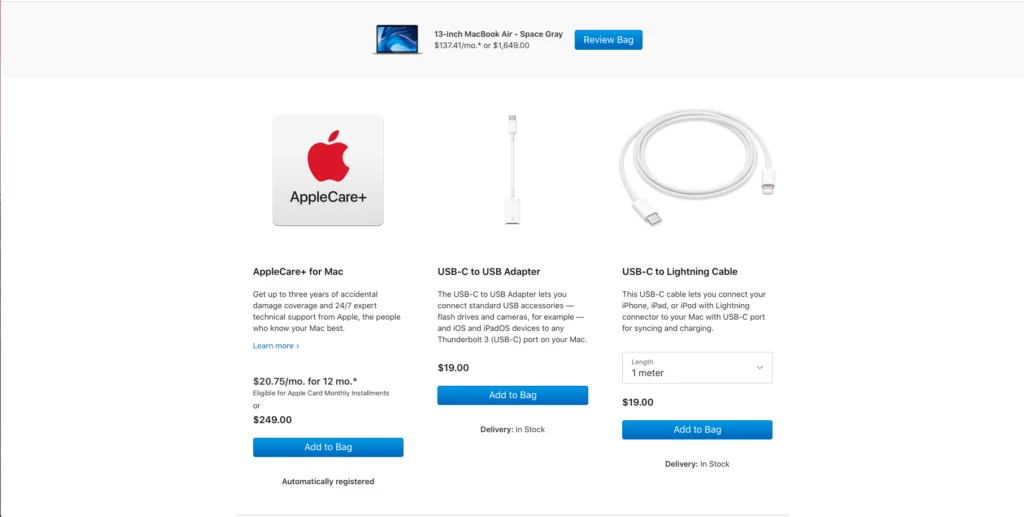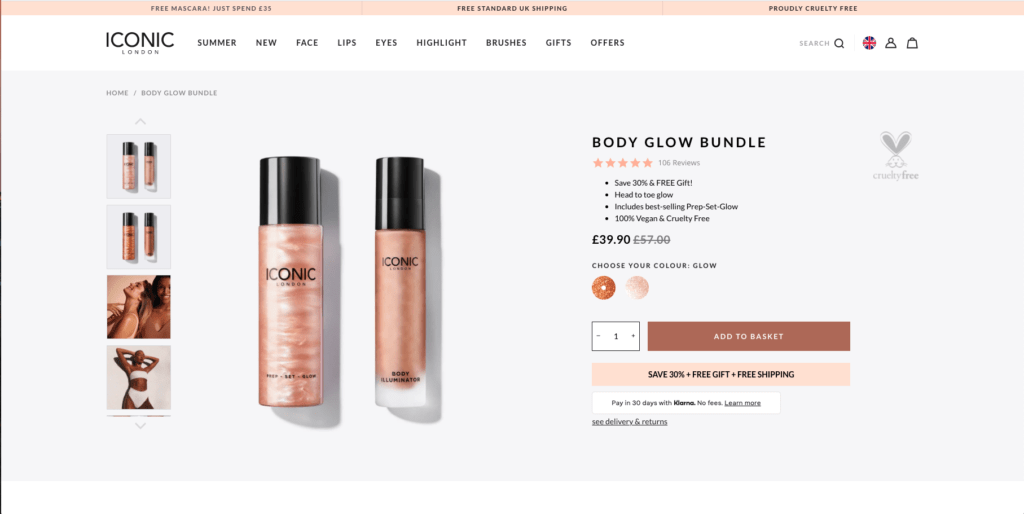Growth by marketing to existing customers
Last time, we waxed lyrical about acquiring new customers with your very own welcome campaign workflow.
This time, we’re hitting pause on customer acquisition and turning our attention to what happens after that coveted first purchase. It’s time to tap the immense value of your existing customer base.
Today is all about customer retention marketing – with email as your catalyst for success, as ever.
What is customer retention marketing?
Put simply, customer retention marketing covers any marketing activity designed to engage and convert past customers. In this way, marketing tactics are used to keep existing customers buying from your business time and time again.
By inspiring loyalty in your customer base, you can increase your business’s customer lifetime value (CLV). Think of this value as the total amount of money a customer is worth to your business over the course of their relationship with your brand.
We’ll preach the customer retention gospel all day long. The alternative is a throwaway mentality where one-time customers are used and abused, and your business is left chasing new prospects day in, day out.
Wouldn’t you rather have a thriving, engaged community of loyal customers who routinely spend money with you and even refer their friends? Of course you would.
Stop the customer drop-off. Here are some shocking numbers
We’re in the business of data gathering. Through experience, we’ve found that the proportion of ecommerce customers who drop off after buying just once is between 75% and 90%.
Let that sink in for a second.
As many as 9 out of every 10 of your business’s first-time customers will never buy from you again. That is, unless you take action.

Generally speaking, lack of attention is the cause of high customer drop-off.
For so many businesses, the majority of the marketing budget is spent on new customer acquisition. This is typically done through channels like social media and pay-per-click advertising.
But just think of the untapped revenue potential lurking within that 90% drop-off.
Harness automated email marketing to keep existing customers sweet (and keep them spending).
This way, you can dramatically increase sales revenue without having to acquire a single new customer.
Customised experiences are key
Generic, uninspiring email marketing campaigns more often than not fall flat. A 2018 report from Epsilon revealed 80% of customers are more likely to buy from brands offering customised experiences.
And who can blame them? No customer wants to feel like a single cell on a CSV.
So, we know customisation is something shoppers are actively looking for in the brands they buy from.
The good news is that even one-time customers have already given you plenty of juicy behaviour data you can leverage to create customised email marketing experiences.
You know who they are, what they’ve bought and when they bought it. With this data alone, you can personalise communications by offering informed product recommendations to the right customers at the right time.

Now we’ve got you interested, let’s get down to business
The basic recipe for email marketing to existing customers has just two key ingredients: cross-selling and upselling.
We introduced these principles back in the third instalment of this series. We explored how they work and, more importantly, how you can leverage them to increase customer lifetime values.
Now, though, we’re going to dig a little deeper. Let’s take a look at how to bake these time-honoured sales techniques into your automated email marketing strategy.
Complement past purchases with cross-selling
Imagine you’re walking a customer through your ecommerce store as you might guide an in-store customer through a brick-and-mortar shop. They’ve shown interest in one product – what would you show them next?
The data you gather on customer orders will help you gradually build a picture of which products are generally purchased alongside others. This data is a goldmine when it comes to supplementing your cross-selling strategy.
But when each of your products is first launched, your knowledge of its functionality means you’ll already have a wealth of existing information on the products that can enhance or complement that functionality.
The backlog of information on cross-sell opportunities that you already possess should always serve as your starting point. From there, gather and analyse the data on complementary purchases generated through real-life customers orders. This way, you can marry your own industry expertise with genuine customer data for best results.
Think outside the box with your cross-sell strategy
Sure, fashion brands are a go-to example of cross-selling done right. One item of clothing doesn’t constitute an outfit. For every pair of jeans sold, there’s a t-shirt, jacket, pair of shoes, bag and countless other garments and accessories to go with it. The add-on purchases sell themselves.
But the potential of cross-selling extends far, far beyond the confines of the wardrobe.
Let’s take global domination expert Apple, for example.
With your shiny new MacBook secured, you might think your spending relationship with Apple is over…for now. But you’d be wrong.
With branded headphones and cables on offer (the latter of which is now vital thanks to a strategic update to the port’s shape), Apple has plenty of ideas in its bag of tricks to keep you spending faithfully.

The travel industry is also replete with cross-selling success stories.
With an airline, you book your flight but you know the spending experience is far from over.
There are the luggage costs, the insurance, any transfers and the dreaded airport parking to contend with.
Cross-selling at its most lucrative.
And we’ve all fallen for it at some point.👇
Upgrade customer spends with upselling
Where cross-selling revolves around complementary purchases, upselling is all about enticing customers to upgrade to a better version of a product or service.
Why should a customer settle for product A when they could have the far sexier, undeniably superior product B (which happens to come with a higher price tag)?

Build in some Surprise and Delight
Surprise and delight are the two key emotions at the heart of best-practice upselling.
Surprise customers by opening their eyes to options they hadn’t realised were available to them.
Delight them by giving them the VIP treatment through email marketing.
Offer upgrades that are exclusive to existing customers, or treat them to a coveted discount on a high-value product bundle.
Exclusivity is everything when it comes to surprising and delighting your customers.
By showering key customers (by which we mean customers who have been or could be big spenders with your business) with personalised perks, you can build rewarding relationships.
These are the kinds of relationships that demand more investment on your part but are worth their weight in gold.
Level up customer satisfaction with upsell options
Whatever your industry, the key to upselling is making it crystal clear what benefits come with upgrading to the pricier option. This needs to be an easy sell.
Ideally, you need to make customers see that the upgrade really is the only option for them.
Hotels leave you in no doubt of the benefits of upgrading to a better room. And when there’s little in it price-wise, who’s going to say no to a more luxurious night’s sleep?
For software and subscription-model businesses, tiered pricing options take the effort out of upselling. You’ve seen the grids where the features of each package on offer are laid bare. The premium option never fails to catch the eye.
Upgrading doesn’t just mean paying more.
It means getting more for your money.
Make your upsell strategies an easy sell by offering genuine value no customer could argue with.
Don’t leave 90% of your first-time customers behind. Automate your email marketing campaigns.
Get your free 14-day trial of our email marketing automation software and take your first step towards a workflow primed to convert existing customers again and again, and again.
See you soon for the next chapter of our automated email marketing handbook.
It’s time to start getting more from your email marketing
Sign up for a free Websand demo and let’s show you how to get the best from your email marketing.
